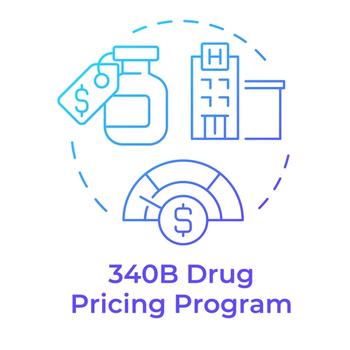
ADA 2010: Findings add fuel to the rosiglitazone controversy
A new post-hoc study of rosiglitazone and cardiac events in patients with type 2 diabetes is adding to the controversy surrounding the thiazolidinedione (TZD) agent. Lead author Richard Bach, MD, associate professor of medicine, Washington University, St. Louis, Mo., presented the new data during a late-breaking clinical study symposium Tuesday morning at the 70th Scientific Sessions of the American Diabetes Association, taking place in Orlando, Fla.
A new post-hoc study of rosiglitazone and cardiac events in patients with type 2 diabetes is adding to the controversy surrounding the thiazolidinedione (TZD) agent. Lead author Richard Bach, MD, associate professor of medicine, Washington University, St. Louis, Mo., presented the new data during a late-breaking clinical study symposium Tuesday morning at the 70th Scientific Sessions of the American Diabetes Association, taking place in Orlando, Fla. Results of Rosiglitazone and Outcomes for Patients With Diabetes and Coronary Artery Disease in the BARI 2D Trial were previewed at a press conference on Monday afternoon.
"Our observation does not suggest any cardiovascular hazard [associated with rosiglitazone] and may suggest benefit," Bach said. "For patients similar to those in the BARI [Bypass Angioplasty Revascularization Investigation] study, our data suggest that there may be a lower cardiac event rate with rosiglitazone than without rosiglitazone."
The key result, he said, was a 28% reduction in the rate of death, myocardial infarction, and stroke compared with patients who had no exposure to TZDs during the study. The risk of congestive heart failure rose by a nonsignificant amount. There was also a 45% increase in bone fractures among patients taking rosiglitazone versus patients with no TZD exposure.
BARI was a randomized trial of insulin-sensitizing treatment versus insulin-providing treatment in patients with both type 2 diabetes and established coronary artery disease. The original study was conducted between January 2001 and March 2005, with follow-up continuing through November 2008. Initial results of the trial were presented at the ADA Scientific Sessions in 2009.
Within the trial population of 2,368 patients, nearly 1,000 patients received rosiglitazone for a total of 3,025 patient-years of exposure, Bach said. There were fewer than 450 patient-years of exposure to pioglitazone and no comparison of outcomes associated with the 2 drugs.
"We concluded that the pioglitazone experience was small enough that it would not provide significant data, " Bach said.
Rosiglitazone was the preferred TZD because it was provided free of charge by its manufacturer, GlaxoSmithKline. Primary support for the trial was provided by the National Heart, Lung and Blood Institute and the National Institute of Diabetes and Digestive and Kidney Diseases.
Rosiglitazone use was not randomized, Bach said, but was instituted at the discretion of investigators at 49 clinical sites in the United States, Canada, Brazil, Mexico, the Czech Republic, and Austria. He noted that the nonrandom use of rosiglitazone and the potential confounding effects of other medications used by patients cloud the results. So does the study design.
"It is a post-hoc analysis," he cautioned. "But it was a trial specifically designed to look at cardiovascular outcomes. The outcomes relative to rosiglitazone are relevant. This is an appropriate addition to the data set. "
BARI data will be presented during an FDA hearing on rosiglitazone in mid-July.
Newsletter
Get the latest industry news, event updates, and more from Managed healthcare Executive.




